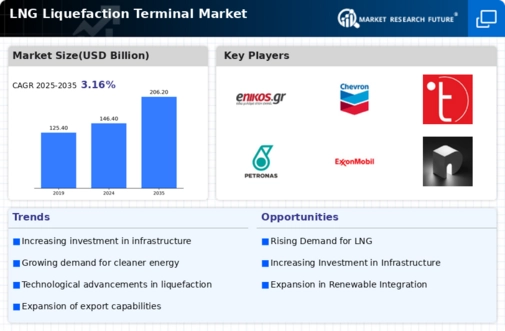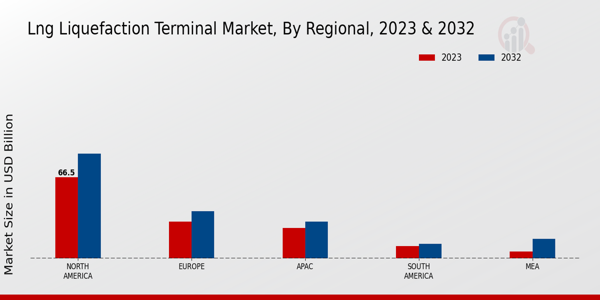The LNG Liquefaction Terminal Market is characterized by its rapid growth and significant competitive landscape, driven by the increasing demand for liquefied natural gas as a cleaner alternative to traditional fossil fuels. Key players in this market are leveraging advanced technology and strategic partnerships to enhance their operational efficiency and expand their geographical reach. The competitive dynamics involve a mixture of established corporations and emerging entities, all vying for market share. The need for optimizing production processes and ensuring regulatory compliance has never been more critical.
As the demand for LNG continues to rise, especially in fast-growing economies, the competitive insights reveal a landscape where innovation, sustainability, and customer-service excellence dictate the terms of success.Eni is prominently positioned in the LNG Liquefaction Terminal Market, recognized for its strong technological expertise and extensive footprint. The company has made substantial investments in liquefaction technology, aiming to maximize efficiency while minimizing environmental impact. Eni's established partnerships with various stakeholders enhance its operational capabilities, allowing it to swiftly adapt to market changes and supply-demand fluctuations.
Additionally, its commitment to sustainable practices and integration of renewable energy resources solidifies its competitive edge, positioning Eni as a forward-thinking player in the liquefaction segment. The company's reputation for reliability and consistent delivery has earned it a loyal customer base, further strengthening its market presence.Chevron also plays a vital role in the LNG Liquefaction Terminal Market, distinguished by its robust resource base and operational excellence. The company operates some of the largest liquefaction facilities globally, capitalizing on its extensive experience and technical know-how to optimize production and enhance safety standards.
Chevron's strategic focus on long-term contracts and distribution networks facilitates steady supply and pricing stability, appealing directly to an evolving customer base that prioritizes reliability. The company's emphasis on innovation in liquefaction processes underscores its commitment to efficiency and sustainability, ensuring that it remains competitive in an increasingly crowded market. With its significant investments in infrastructure and technology, Chevron continues to strengthen its position and influence within the LNG landscape.




















